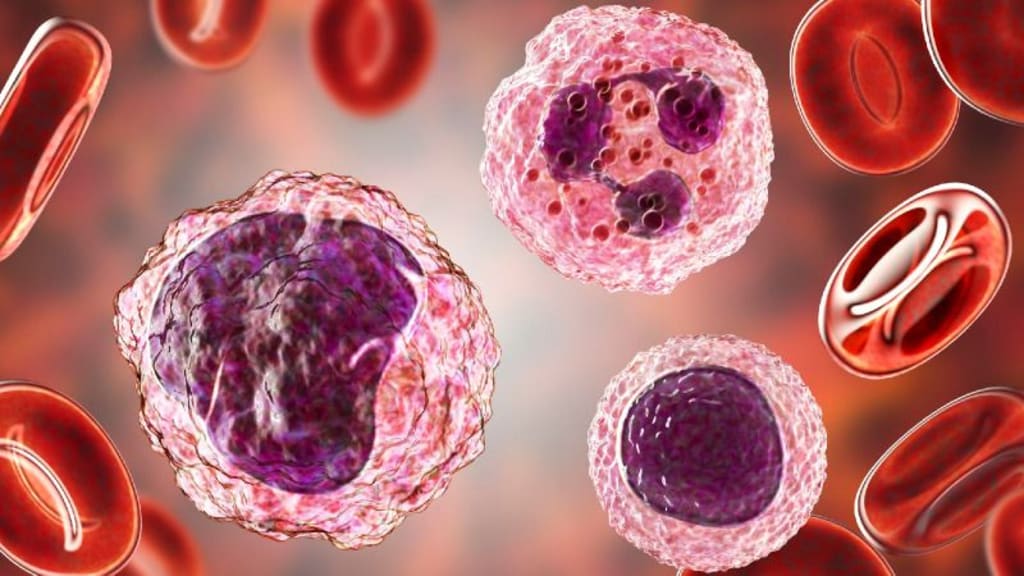Content warning
This story may contain sensitive material or discuss topics that some readers may find distressing. Reader discretion is advised. The views and opinions expressed in this story are those of the author and do not necessarily reflect the official policy or position of Vocal.
WHAT ARE NEUTROPHILS?
NEUTROPHIL COUNT EXPLAINED

Overview
Neutrophils are a type of white blood cell, a critical component of the immune system. They are crucial in defending the body against bacterial and fungal infections. Neutrophils quickly move to sites of infection, where they engulf and destroy invading pathogens through phagocytosis.
Injuries, or any kind of infection, make our lives difficult. White blood cells form a frontline defence against bacteria, viruses, and fungi, swiftly migrating to sites of infection to engulf and neutralise pathogens. A key indicator of the immune system’s health is the neutrophil count, which represents the quantity of these cells circulating in the bloodstream.
Neutrophils are undeniably crucial immune system components, acting as the vanguard in the body’s defence against infections. Their rapid response to invading pathogens is pivotal for the early detection and containment of microbial threats. This informative article will help you understand neutrophil functions and the importance of maintaining a balanced neutrophil count.
NeutrophilsNeutrophils
The Basics of Neutrophils
Let’s check some basic information about neutrophils, such as their origin and structures.
Origins and Production: Neutrophils are white blood cells produced in the bone marrow through a process known as granulopoiesis. They account for a significant portion of the white blood cell count, making them a crucial immune system component.
Structure and Characteristics: Neutrophils are characterised by their multilobed nucleus, which gives them a distinctive appearance under a microscope. Despite being small in size, they pack a powerful punch when it comes to combating infections.
Role of Neutrophils in the Immune System
Here are some key roles neutrophils play in the immune system.
Phagocytosis: The engulfing process neutrophils are renowned for their exceptional phagocytic ability. When pathogens, such as bacteria or fungi, invade the body, neutrophils quickly migrate to the site of infection. Through phagocytosis, they engulf and digest the invaders, neutralising the threat.
PhagocytosisPhagocytosis
Release of antimicrobial proteins: Neutrophils don’t rely solely on phagocytosis. They also release potent antimicrobial proteins to destroy pathogens. These proteins create an inhospitable environment for invaders, aiding in eradicating infections.
Formation of neutrophil extracellular traps (NETs): In addition to phagocytosis, neutrophils can deploy a unique defence mechanism known as NETosis. They release mesh-like structures called Neutrophil Extracellular Traps (NETs), composed of DNA, histones, and antimicrobial proteins. NETs ensnare and neutralise pathogens, preventing their spread.
Understanding Neutrophil Count
Neutrophils, a type of white blood cell, play a central role in the body’s defence against infections, and alterations in their count can indicate various health conditions. Here’s a closer look at what the neutrophil count entails
Normal Range and Variations: A standard blood test, known as a complete blood count (CBC), measures the number of neutrophils in the blood. The normal range can vary slightly between individuals, but deviations from the baseline can indicate underlying health issues.
Neutropenia and Neutrophilia: A low neutrophil count, known as neutropenia, may make an individual more susceptible to infections. On the other hand, a high neutrophil count, termed neutrophilia, can be indicative of inflammation or infection.
Increase in total number of neutrophils under a microscopeIncrease in total number of neutrophils under a microscope
What Factors Affect Neutrophil Count?
Various factors influence the neutrophil count, and understanding these factors is essential for interpreting changes in the count and assessing the overall health of the immune system. Here are several factors that can affect neutrophil count:
Infections and inflammatory conditions: During infections, the body may produce more neutrophils to combat the invading pathogens. Inflammatory conditions can also trigger an increase in neutrophil count.
Medications and medical treatments: Certain medications and medical treatments, such as chemotherapy, can suppress bone marrow function, leading to a decreased neutrophil count. It is crucial to monitor and manage neutrophil levels in these situations.
About the Creator
Abdullahi Alabi
I am Abdullahi by name. An expert writer with numerous years of experience. I have established myself as a prominent figure in the world of writing.
Enjoyed the story? Support the Creator.
Subscribe for free to receive all their stories in your feed. You could also pledge your support or give them a one-off tip, letting them know you appreciate their work.





Comments (1)
Hello, AI is permitted on Vocal. It is a Vocal policy that content created with AI is identified as such at the start of the story/article. Your article/story has many hallmarks of AI-assisted/generated content. You can find the details of the Vocal policy here: https://vocal.media/resources/an-update-from-vocal-on-ai-generated-content, Please amend your piece to be in compliance.